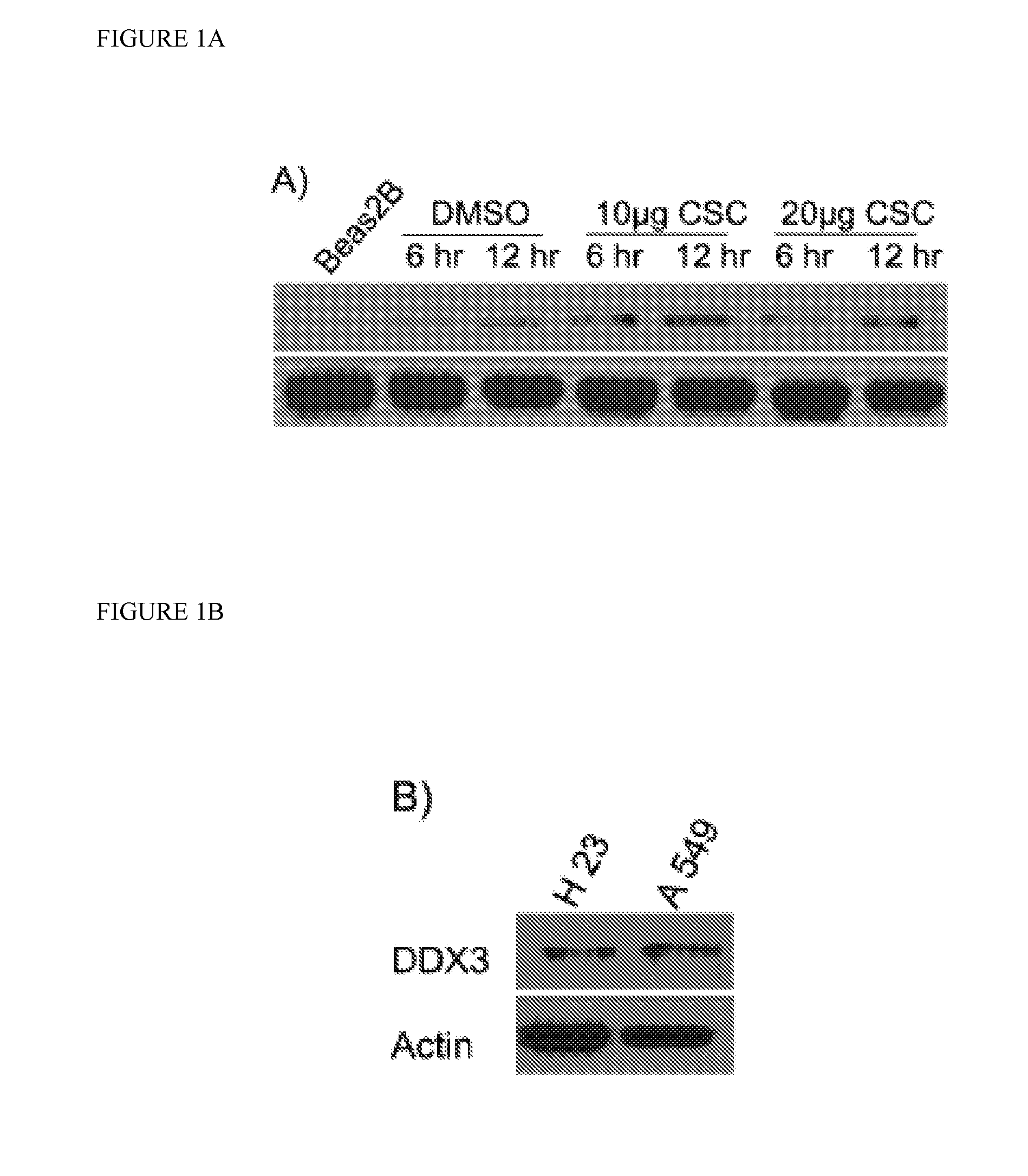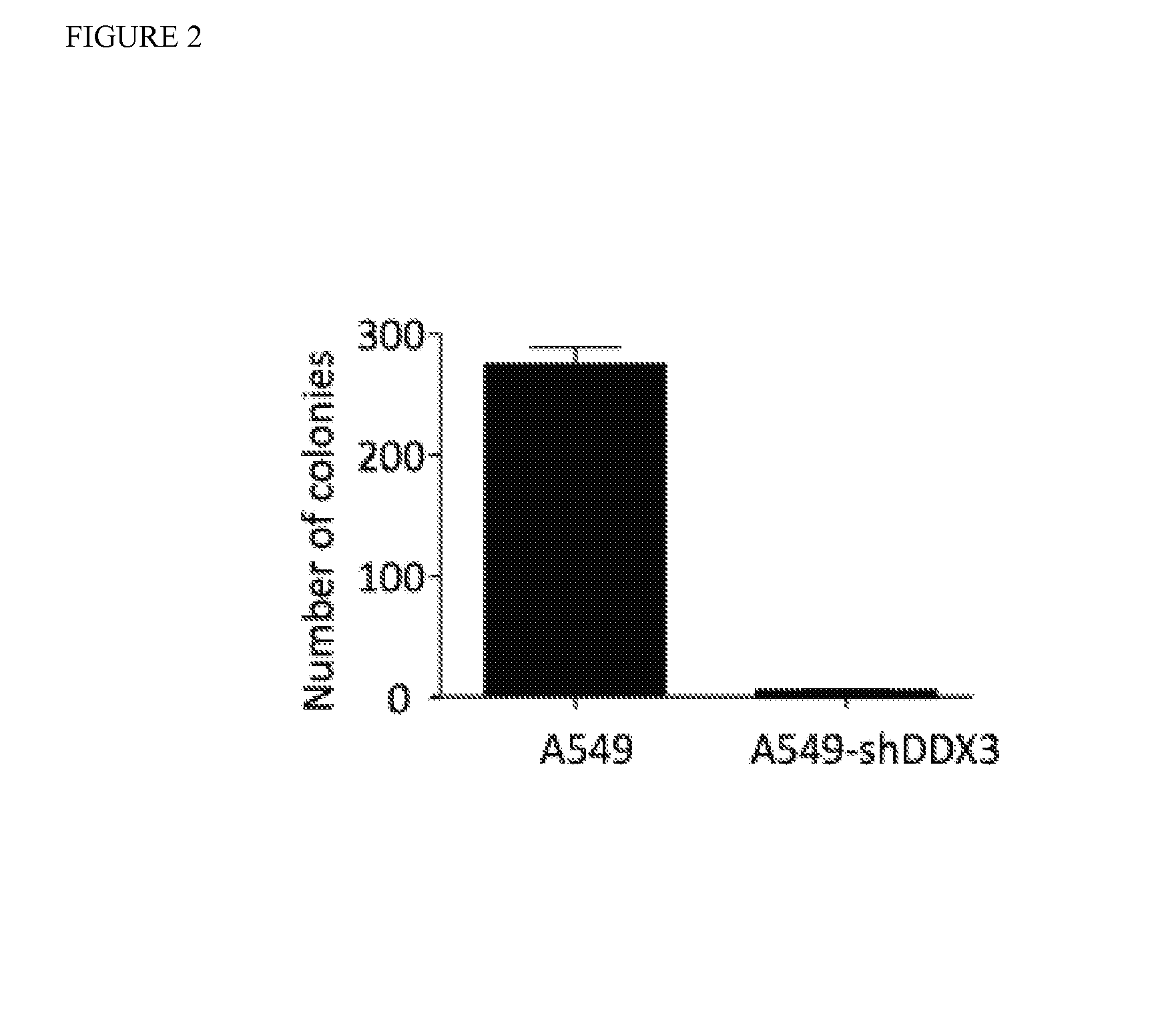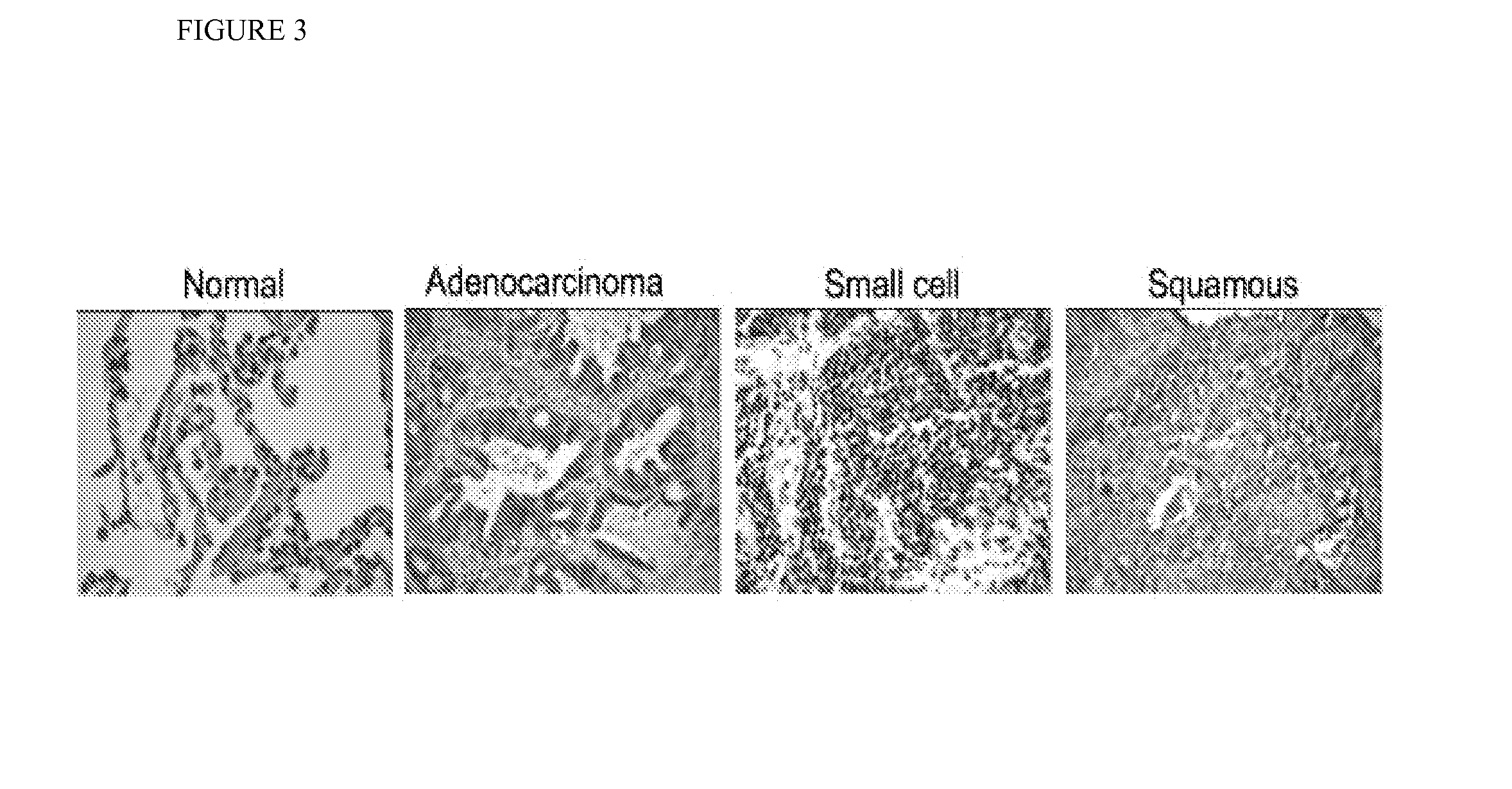Compounds and methods of use in ablative radiotherapy
a technology of ablative radiotherapy and compounding, which is applied in the direction of biocide, drug composition, therapy, etc., can solve the problems of too little knowledge regarding the mechanism and the association of sabr with prominent normal tissue toxicity, and achieve the effect of enhancing the effectiveness of sabr therapy and reducing lung tumor burden
- Summary
- Abstract
- Description
- Claims
- Application Information
AI Technical Summary
Benefits of technology
Problems solved by technology
Method used
Image
Examples
example 1
[0071]The experiments show activation of DDX3 in lung cell lines (FIG. 1A). Moreover, aggressive lung cancer cell lines such as A549 and H23 exhibited robust expression of DDX3 (FIG. 1B). Importantly, down-regulation of DDX3 in A549 abrogated the colony forming abilities in soft agar assays (FIG. 2). Taken together these data indicate that DDX3 is one of the components necessary for lung cancer biogenesis and provides a novel target for lung cancer treatment.
example 2
[0072]DDX3 expression in lung cancer clinical samples. DEAD box helicases have been identified as transcriptional co-activators of both growth promoting and tumor suppressor genes. Thus, we extended our studies to evaluate the expression profile of DDX3 in lung cancer patient samples by immunohistochemistry. As shown in FIG. 3, lung adenocarcinoma sample as well as small cell carcinoma and squamous cell carcinoma showed robust DDX3 expression as compared to the normal lung. Interestingly small cell carcinoma and squamous cell carcinoma had more nuclear staining than the adenocarcinoma sample. This indicates a role for DDX3 in the pathogenesis of human lung cancer.
example 3
[0073]Generating small molecular inhibitors of DDX3 function. As loss of DDX3 function abrogated colony forming abilities along with increased expression in lung carcinoma samples, a search was initiated to identify molecules that could target a functional substrate binding site of DDX3 protein. Initial work generated a fused diimidazodiazepine ring molecule (RK-33) to target RNA helicase. To confirm the functional activity of RK-33 on DDX3, an in vitro assay was carried out to determine the effects of RK-33 on helicase activity. DDX3 protein was synthesized using the pET system from Novagen. Following DDX3 purification, the unwinding assays were performed using duplex oligos, purified DDX3 and RK-33. Quantification was done by evaluating the pixel density of the native duplex oligos and the unwound oligos. As shown in FIG. 4, 100 μM of RK-33 was able to reduce unwinding of the duplex oligos by at least 60% over a period of 80 minutes. This indicates that RK-33 has the ability to in...
PUM
| Property | Measurement | Unit |
|---|---|---|
| Solar gamma radiation | aaaaa | aaaaa |
| Solar gamma radiation | aaaaa | aaaaa |
| Solar gamma radiation | aaaaa | aaaaa |
Abstract
Description
Claims
Application Information
 Login to View More
Login to View More - R&D
- Intellectual Property
- Life Sciences
- Materials
- Tech Scout
- Unparalleled Data Quality
- Higher Quality Content
- 60% Fewer Hallucinations
Browse by: Latest US Patents, China's latest patents, Technical Efficacy Thesaurus, Application Domain, Technology Topic, Popular Technical Reports.
© 2025 PatSnap. All rights reserved.Legal|Privacy policy|Modern Slavery Act Transparency Statement|Sitemap|About US| Contact US: help@patsnap.com



